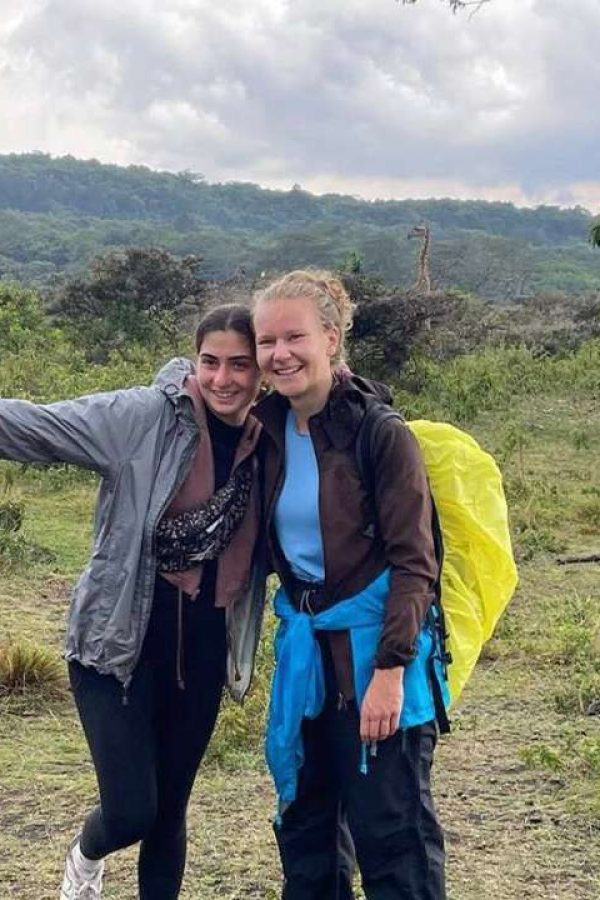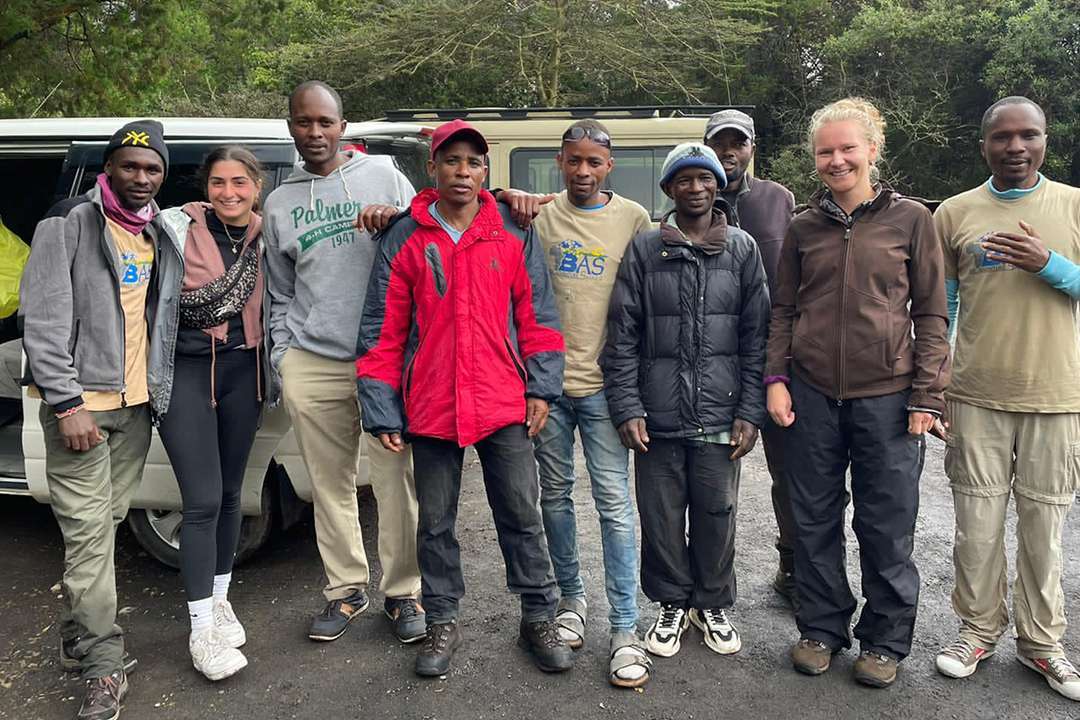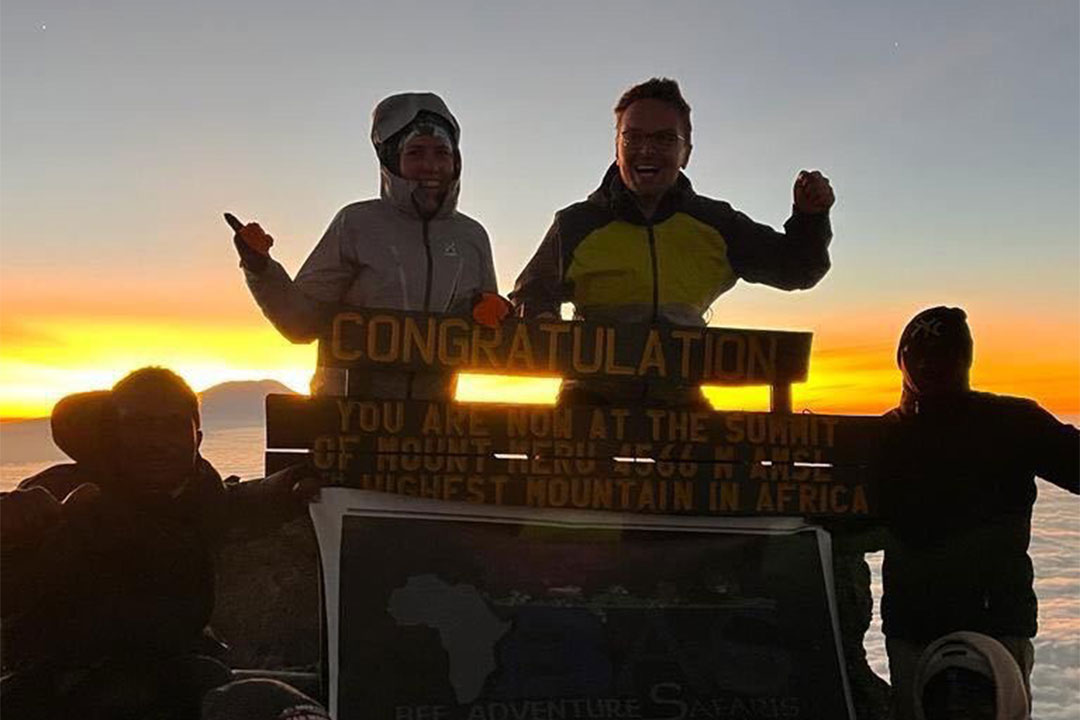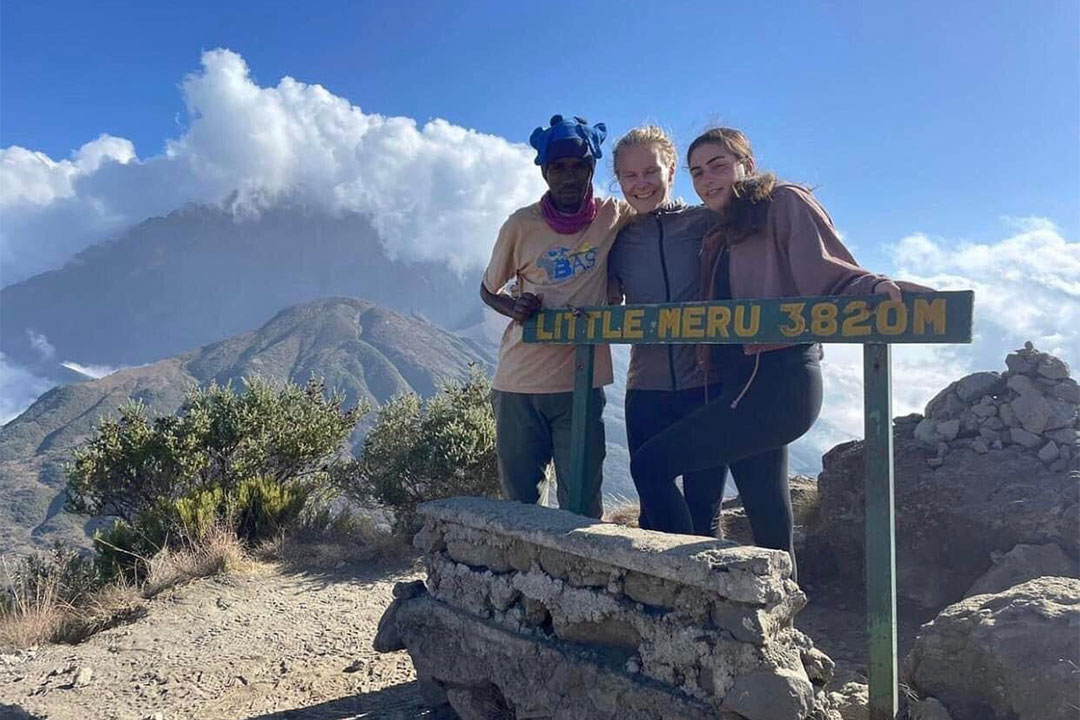Rising majestically above the plains of Arusha National Park, Mount Meru is Tanzania’s second-highest peak and an adventurer’s paradise. Standing at 4,566 meters (14,980 feet), it offers a less crowded yet equally rewarding trekking experience compared to its more famous neighbor, Mount Kilimanjaro. With its dramatic landscapes, including lush rainforests, crater ridges, and stunning summit views, Mount Meru is a hidden gem for those seeking both challenge and beauty. The climb is a perfect blend of adventure and nature, as the trail winds through diverse ecosystems teeming with wildlife like giraffes, buffalo, and monkeys.
Beyond its breathtaking scenery, climbing Mount Meru is an excellent opportunity to prepare for higher-altitude climbs or simply enjoy an unforgettable trek in its own right. The route is shorter but steeper, requiring physical fitness and determination, yet it rewards climbers with panoramic views of Kilimanjaro and the surrounding landscapes from the summit. Whether you’re a seasoned hiker or a beginner, Mount Meru promises an awe-inspiring journey into one of Tanzania’s most stunning natural landmarks.
Non-Technical Challenge:
Climbing Mount Meru is a physically demanding yet non-technical trek, making it accessible to adventurers without prior climbing experience. The hike requires stamina and determination, reaching an altitude of 4,566 meters (14,980 feet), offering an impressive achievement for trekkers.
Altitude Considerations:
While Mount Meru’s altitude is lower than Kilimanjaro, acclimatization is still crucial to prevent altitude sickness. The gradual ascent and overnight stays at designated huts allow climbers to adapt more effectively and safely enjoy the journey.
Guided Climbs Only:
Trekking Mount Meru requires booking through a registered guide. For safety and wildlife conservation, all climbers are accompanied by experienced guides and park rangers, ensuring a secure and enriching experience.
Support from Porters:
Porters play a vital role in carrying gear, setting up camps, and managing logistics along the trail. Climbers need only carry a daypack, as the rest of the equipment is expertly handled by the support crew.
Hut Accommodations:
Unlike Kilimanjaro, Mount Meru offers hut accommodations at designated points along the route. This provides shelter and a more comfortable experience compared to camping, especially in unpredictable mountain weather.
No Showers on the Mountain:
While there are no showers on Mount Meru, climbers are provided with bowls of warm water for basic hygiene. Bringing baby wipes and other portable hygiene essentials can help maintain cleanliness during the trek.
Shorter Routes:
The standard route to Mount Meru’s summit typically spans 3–4 days, making it a shorter yet highly rewarding climb. This duration makes it an excellent option for those with limited time or as a preparatory trek for Kilimanjaro.
4,566 meters (14,980 feet).
115 years ago
Physical Endurance, Hiking Skills, Basic Navigation
Hans Meyer and Ludwig Purtscheller

Average Expeditions Duration
Average Price
Kilimanjaro International Airport
Distinctive dormant volcanic cone
Rainforest , Moss Forest, Heather and Moorland Zone & Alpine Zone
Socialist Peak, Little Meru ,The Ash Cone
Our Mount Meru itineraries are thoughtfully designed to cater to a wide range of adventurers, from those looking for a challenging trek to those who prefer a more relaxed pace. Whether you’re an experienced mountaineer or someone embarking on your first high-altitude adventure, we offer itineraries that suit all levels of fitness and experience. Each route is carefully planned to balance the need for acclimatization, scenic exploration, and a rewarding summit experience. Our expert guides ensure your safety and provide insights into the mountain’s history, wildlife, and natural beauty throughout the journey.
We understand that each adventurer is unique, which is why our itineraries can be customized to suit your personal preferences and time constraints. From quick 3-day expeditions to longer, more immersive treks, every detail is tailored to offer an unforgettable experience. With flexible itineraries that include different routes, accommodations, and itineraries, climbers can select the perfect adventure to match their goals and desires. Whether you’re after a physical challenge or simply wish to soak in the mountain’s stunning vistas, our itineraries are designed to create memories that will last a lifetime.
The price for hiking Mount Meru with Beeadventure Safari typically ranges between $1,000 to $2,000 USD per person, depending on the specific tour package, group size, and other factors. This price covers essential inclusions such as park entry fees, climbing permits, and the required guide and ranger services, ensuring both safety and environmental responsibility throughout your trek. Our experienced guides and park rangers will accompany you on the journey, providing insights into the mountain’s rich history and wildlife. The cost also includes the support of porters who carry your gear and set up the camps, ensuring you can focus on enjoying the experience without the added strain of carrying heavy loads.
In addition to these essentials, Beeadventure Safari ensures that your comfort and well-being are prioritized with meals and accommodation provided along the route. Accommodation is typically in well-maintained huts, which offer shelter and a place to rest after a long day of hiking. The meals, prepared by our skilled team, are designed to fuel you with nutritious and energy-packed options to keep you going. The trek usually spans 3 to 4 days, and transportation from Arusha or other nearby areas to the Momella Gate (the starting point of the climb) is included in the package.
Optional costs may include gear rentals for equipment like trekking poles, sleeping bags, and hiking boots, which are available through Beeadventure Safari at an extra charge. Additionally, it is customary to provide tips to your guide, porters, and other staff members at the end of the trek, though these are not included in the package price. For those seeking a more personalized experience, Beeadventure Safari also offers premium packages that can include upgraded accommodations and extra amenities, though these will increase the overall cost of the hike. We recommend comparing the different packages we offer to ensure that you find the perfect balance of adventure, comfort, and value for your Mount Meru experience.



The weather on Mount Meru varies dramatically across its different climate zones, and trekkers need to be prepared for rapidly changing conditions as they ascend. Starting at the base, the Lower Slopes (Rainforest Zone) feature a warm and humid climate with frequent rainfall throughout the year. The lush, tropical vegetation thrives in these conditions, creating a dense, misty atmosphere in the mornings and occasional heavy downpours. Temperatures at the base typically range from 15°C to 25°C (59°F to 77°F), making it warm and comfortable for trekking, but the frequent rain means that hikers should come prepared for wet conditions. The lower slopes are especially humid and can feel warmer due to the moisture in the air.
As you ascend further up the mountain, the weather begins to shift, and the Moss Forest and Heather Zones present cooler temperatures and more temperate conditions. This middle section of the trek is dominated by mist and a sense of tranquility, with temperatures ranging from 5°C to 15°C (41°F to 59°F). Although rainfall is less frequent here than in the rainforest zone, the weather can still be unpredictable, with light showers often occurring. The higher you climb, the cooler and more variable the conditions become, requiring trekkers to adjust their clothing and gear for the change in altitude and weather patterns. By the time you reach the alpine zone, conditions are more challenging, and climbers should expect much colder temperatures, high winds, and potentially ice or snow, especially as they approach the summit.

Our mountain guides are seasoned professionals with over 20 years of combined experience, offering unmatched expertise in navigating challenging terrains and creating unforgettable adventures. Their deep knowledge of the mountains, paired with a passion for the great outdoors, ensures that every trek, climb, or expedition is both safe and rewarding. Whether you’re an experienced adventurer or a first-time explorer, our guides are here to tailor the journey to your skill level and goals.
Safety is our top priority, and each of our guides is a certified First Aid Responder. They are trained to handle emergencies with confidence and care, giving you peace of mind as you focus on the experience. From providing expert advice to sharing fascinating stories about the mountains, our guides are dedicated to making your time with us an extraordinary adventure.





At BeeAdventure Safari, we believe a vacation is far more than booking a hotel, catching a flight, or renting a car. It’s a holistic experience that connects every element into a transformative journey. As we proudly celebrate our 10th Anniversary, we reflect on a decade of curating meaningful adventures that inspire and ignite the soul. Our trips are thoughtfully designed to foster personal growth, creating experiences that transcend expectations. Whether it’s connecting with local cultures, exploring breathtaking landscapes, or overcoming challenges, our mission is to craft journeys that bring lasting value to travelers, local hosts, and the planet.
Join us as we continue redefining travel—creating adventures that leave a lasting impact on the world and your heart.
Build a tailor made trip in less
time
Push your boundaries and experience an adventure
Feel Safe and supported while
traveling
Receive open and honest consultation. Always
Verified Amazing Adventure I had an amazing adventure with Izack and Bee Adventure Safaris. I did the Hadzabe tribe visit and it was one of the coolest experiences. The guides are knowledgeable, have a great sense of humor (which is a big plus for me😄) and also very helpful with taking videos and photos for me as a solo traveler. It was a great time and I highly recommend them for your safari adventuresVerified Amazing experience Had a best time on safari. It was well organized and they helped with everything. I really enjoyed my time there and I would go again :)Verified Amazing 3 days Tour Serengueti-Ngorongoro I spent three extraordinary days on the safari organised by Bee Adventure Safari. I did the Serengeti-Ngorongoro route. First of all, it is very well organised, they pick you up at the hotel or at the airport, a cook comes, so you don't have to worry about food. We slept in a camp with basic services covered.The guide is very good, he has great knowledge, and he explains things very well. The jeep was in good condition, which is very important on a safari. There were 6 of us, the exact number of people I think. The quality-price ratio is frankly good.In short, a very complete safari in every sense.Verified Absolutely recommended experience. We did a 5 days safari: the guide Patrice and the driver Ben were special and made us live an unforgettable experience. The lodges where we stayed were all comfortable and lived up to our expectations, especially Rhino lodge, our favorite. Perfect organization, in every detail.Verified Amazing safari Our experience on safari was amazing we truly enjoyed ourself. Izzak truly knew what he was doing and showed us a good time. We got to see loads of animals n the start of the migration from Tanzania to Kenya. You won’t be disappointed by his service. Definitely will use him again when we come back to Tanzania 🇹🇿.Verified The 3 days safari camp and the food they provide is amazing. Izak is good tour guild Izak and his team have giving me and my partner the best safari tours of our life. The food food was amazing and the 3 day camping was a good experience. I’ll highly recommendVerified All in all satisfied My safari was very good. Douglas, the guide, was a safe and very experienced man. I could see the Big 5 and he always had a sharp eye for the animals. Accommodation and supply were top!Verified Szuper kirándulás We participated in a series of excellent programs. He was happy to answer any questions we didn't understand and explained. He fulfilled all our extra requests. He always showed up and waited for us at the pre-arranged time, but rather before. During our travels, we had no problems and got to excellent accommodation and restaurants with his help. In fact, we can have dinner together with the locals as expats.Verified Very good adventure ! Very nice and professional guide! We enjoy our trip in Arusha national park with Bee adventure Safari and especially Izack who was very good with us.I strongly recommend !Verified Kilimanjaro climbing Trekking Kilimanjaro with BeeAdventuresafari via the Marangu route was an incredible experience. The well-organized itinerary and knowledgeable guides made the journey smooth. The huts along the route provided comfort, and the team's professionalism ensured safety. Breathtaking views and a sense of accomplishment at Uhuru Peak made it an unforgettable adventure. Highly recommend BeeAdventuresafari for their expertise and commitment to a memorable Kilimanjaro trek.Showing our latest reviews
The best time to climb Mount Meru is during the dry seasons, which run from June to October and December to February. These months offer the most stable weather, with less rainfall, making the trek more comfortable and safer. The dry season provides clear skies, which means climbers can enjoy breathtaking views of the surrounding landscapes and the distant Mount Kilimanjaro from the summit. The temperatures are cooler, which also makes for a more pleasant trekking experience, especially at higher altitudes. However, even during the dry season, the weather can change rapidly, so it’s important to be prepared for any conditions.
In contrast, the wet season, from March to May and November to December, brings higher rainfall and a higher risk of slippery trails, mud, and fog. While trekking during these months is still possible, it’s generally more challenging, and conditions can be unpredictable. If you choose to climb during the wet season, expect rain showers, especially in the lower forested regions. Visibility might also be reduced, and the trails can become slippery, so extra caution is required. Therefore, for a more comfortable and predictable trek, the dry seasons are typically recommended, but climbers should be prepared for possible changes in weather at any time.
Packing for Mount Meru requires careful consideration due to the varying climates and terrain you’ll encounter. A good quality hiking backpack is essential, with enough room for your personal belongings, such as a sleeping bag, waterproof clothing, and sunscreen. Layering your clothing is important to handle the drastic temperature changes as you climb from the warm rainforest to the cold alpine zone. Lightweight, moisture-wicking clothing is ideal for the lower regions, while you’ll need warm layers (such as a fleece jacket or thermal layers) as you ascend to the summit. Waterproof outerwear is also crucial, especially if trekking in the wet season, to protect against rain and wind.
In addition to clothing, you’ll need sturdy hiking boots with good grip, as the terrain can be rocky and uneven. Trekking poles can provide added stability, especially in the steeper sections. Don’t forget essentials like a headlamp for night-time or early morning hikes, a first aid kit, and snacks to keep your energy up. A water bottle or hydration system is necessary to stay hydrated, and a camera to capture the stunning views is highly recommended. Finally, it’s always a good idea to bring sunscreen, lip balm, and a hat for sun protection, as the higher you climb, the more exposed you become to the sun’s rays. Be sure to check with your tour operator to see if any additional gear or equipment is provided.

